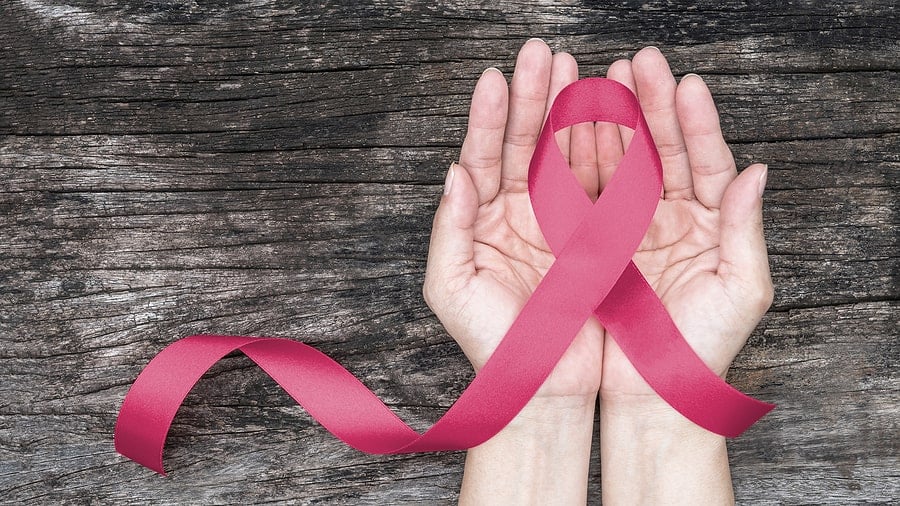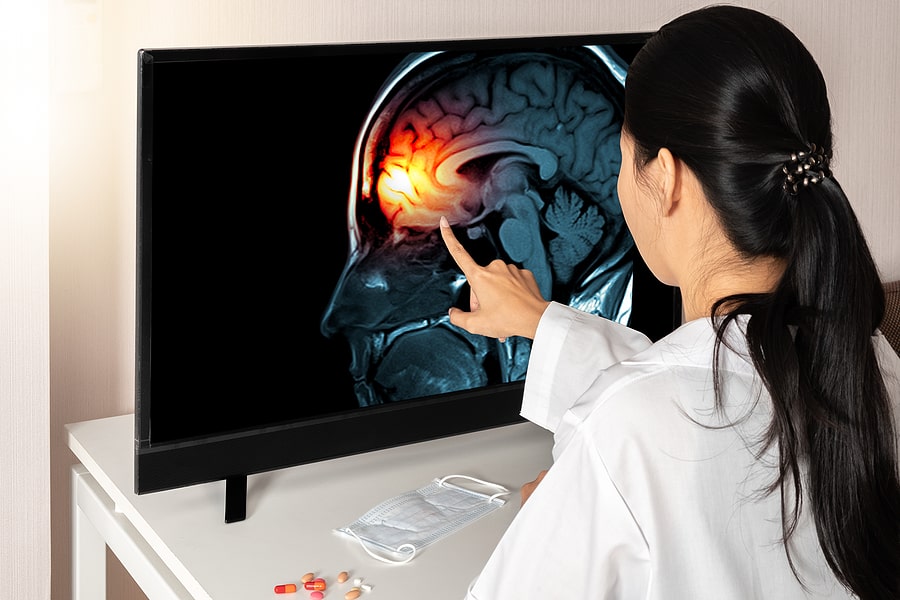Can AI Detect Breast Cancer?

Early detection is key to successful treatment and a better prognosis for the thousands of breast cancer cases that are diagnosed each year. As such, researchers have been looking for ways to improve the speed and accuracy of breast cancer screening programs, which has led to the development of artificial intelligence (AI) for breast cancer detection. Also called computer-assisted detection, this AI-driven technology has the potential to revolutionize the way breast cancer is detected and treated, leading to higher breast cancer detection rates, earlier diagnosis and improved outcomes for breast cancer patients.
Computer aided detection of breast cancer is becoming increasingly popular due to the successful performance of AI systems. AI systems use machine learning algorithms to identify abnormalities in mammograms. They are able to identify patterns, such as masses, calcifications, and asymmetries, that may indicate the presence of breast cancer before other signs of cancer are present. AI software is also able to compare previous mammograms to detect changes that may indicate cancer, and can be especially helpful in detecting breast cancer in women with dense breasts.
AI's effectiveness in detecting breast cancer is still being studied. Research indicates that AI software is as accurate as radiologists in detecting breast cancer in mammograms, and some studies suggest that AI may even be more accurate. However, AI still has some limitations. AI is not able to diagnose cancer, and it requires careful interpretation from a trained professional. Additionally, AI systems may not be able to detect certain types of breast cancer. Therefore, AI is not a replacement for traditional mammography, but rather a helpful tool for radiologists to use in their diagnosis.
Developments in Artificial Intelligence (AI)
In recent years, AI has become one of the most rapidly advancing fields of technology, with a wide range of applications and potential. AI is defined as the ability of a computer system to perform tasks that require intelligence similar to that of a human being, such as calculating, making decisions, and learning from experience. AI can be used to automate complex tasks and improve decision-making processes in various applications and industries, and can aid the creation of new products and services.
One of the most prominent developments in AI is the field of machine learning. Through this technology, computers are able to learn from data, making decisions and predictions based on past experiences. This has enabled a wide range of applications, from helping to diagnose medical conditions to predicting customer behavior.
Robotics is another area of AI that has seen considerable development in recent years. This technology uses AI to create robots that are able to interact with the environment and complete complex tasks. Robots are now used in a variety of industries, from manufacturing to healthcare, and are expected to become increasingly commonplace as technology advances.
Natural language processing (NLP) is another important development in AI. This technology enables machines to understand human language and respond to it in meaningful ways. NLP is used in a variety of applications, such as chatbots and virtual assistants, and is improving the way people interact with machines.
AI is also being used to develop autonomous vehicles. These cars are able to navigate roads, detect obstacles, and respond to commands without any human input. Autonomous vehicles are expected to revolutionize the transportation industry, providing safer and more efficient travel.
AI has been increasingly used in the medical field. In addition to being used to detect breast cancer in recent years, AI has been used in healthcare to support medical imaging analysis, forecast kidney disease, and assisting emergency medical staff in detecting the possibility of a heart attack. AI algorithms can be trained to analyze large amounts of data in the form of medical images, medical records and clinical research trials, and identify patterns that are often difficult for humans to detect.
Hungary, Germany, and More Experiment with AI in Early Detection
AI is being used for early detection of breast cancer in a variety of countries around the world with promising results. Hungary is one of the pioneers on this front, with a growing body of research on the use of AI technology in real life cases. One example is Kheiron Medical Technologies, a software company that develops AI tools to assist radiologists in detecting early signs of cancer. Kheiron’s technology was introduced in 2021 in a small clinic in Budapest called MaMMa Klinika. The AI program is used to agree or disagree with the findings from mammogram readings from two radiologists. Throughout five MaMMa Klinika, 22 cases have been documented since 2021 in which the A.I. identified a cancer missed by radiologists, and there are more of these cases under review. Kheiron has reported that its A.I. software matched the performance of human radiologists when acting as the second reader of mammography scans, and also cut down on radiologists’ workloads by at least 30 percent.
Also in 2021, Semmelweis University’s Medical Imaging Center in Budapest introduced two X-ray devices equipped with AI technology that can perform a variety of different tasks from detecting pulmonary changes to detecting breast cancer. One of the tools they use is “Hologic 3Dimensions”, which enables three dimensional tomosynthesis – an advanced form of mammography – that enables doctors to detect about 20-60% more breast cancer than using traditional mammography.
In Germany, a similar AI system was also developed by a company called Vera. Vera’s breast cancer detection technology is used in breast cancer screening centers across Germany.
A large-scale study tested Vera’s accuracy on reading past mammogram decisions and found that radiologists assisted by AI screen for breast cancer more successfully than they do when they work alone. The study also showed that the AI produces more accurate results when combined with the readings of a radiologist than it does when operating alone.
Beyond Hungary and Germany, AI technology is also being studied and utilized in other countries to detect cancer. In the United States, many hospitals and medical centers have begun utilizing AI-enabled technologies to detect breast cancer. Researchers at the University of California San Francisco developed an AI system that was able to detect cancerous lesions in mammograms with incredible accuracy. This system is said to be more accurate than traditional mammography, and researchers are now working on training the system to diagnose melanoma.
Researchers at Google have also contributed to AI Breast Cancer detection technology. In October 2018, the company developed a deep learning tool that could identify metastasized breast cancer with 99 percent accuracy. In January 2020, teams at Google, DeepMind, Cancer Research UK Imperial Centre, Northwestern University and Royal Surrey County Hospital worked together to publish findings from two years of research into possible improvements in AI breast cancer detection. The findings show that their AI model spotted breast cancer in de-identified screening mammograms with greater accuracy, fewer false positives, and fewer false negatives than human experts.
The Role of AI in Detecting Breast Cancer in 9/11 Survivors
AI has become an increasingly important tool for detecting and diagnosing breast cancer in 9/11 survivors. AI technology has been used to reduce the amount of readings needed for a mammogram and to differentiate between benign and malignant lesions.
Reduced Reading Volume
AI technology can reduce the need for double readings of a mammogram, allowing radiologists to focus on the images that require their attention the most. AI can also be used to identify unusual lesions that may require a closer look. This has the potential to reduce the amount of time needed to read a mammogram and make it easier to detect early signs of breast cancer.
Differentiating Between Lesions
AI technology can also be used to differentiate between benign and malignant lesions. AI can help identify the characteristics of a lesion that may indicate it is cancerous, allowing radiologists to quickly and accurately diagnose the condition. This can help reduce the amount of time needed to diagnose a patient, as well as reduce the amount of false positive results.
Reduced Workload for Radiologists
AI technology can also help reduce the workload for radiologists by automating certain processes. For example, AI can be used to automate the process of measuring the size of a lesion, which can be time-consuming for radiologists. This can help reduce the time needed for a diagnosis, allowing radiologists to focus on more complex cases.
The Future of Computer-Aided Detection for 9/11 Survivors
AI technology is still in the early stages of development, but it has the potential to be a powerful tool in the fight against breast cancer. Its ability to detect cancerous lesions quickly and accurately can give 9/11 survivors the opportunity to catch illnesses early. Additionally, AI can reduce the workload of radiologists, allowing them to focus on more complex cases. As AI technology continues to develop, it could potentially revolutionize the way other types of cancer are detected and treated as well.



